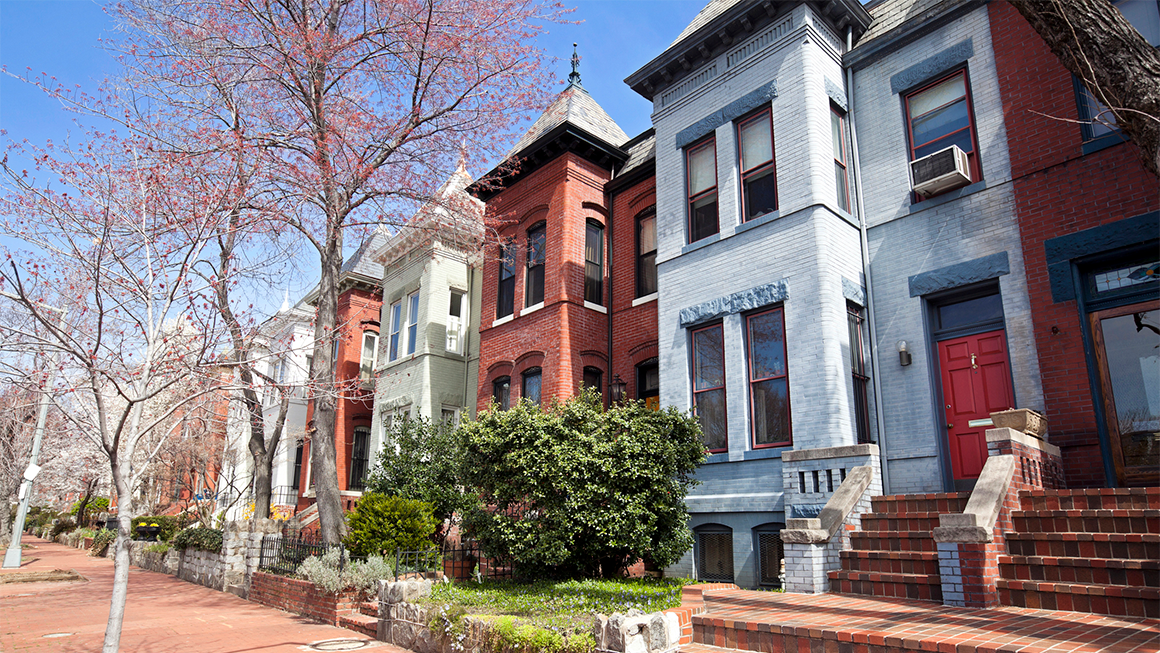
Unemployment claims in Washington, DC, are on the rise. That’s according to data released by the US Department of Labor (PDF) showing that first-time unemployment claims increased by 25 percent between February 15 and February 22. Compared with this time last year, three times as many DC workers have already filed for unemployment insurance.
According to the Washington Post, about 2,000 federal employees had filed for unemployment in DC at the end of February. That number is expected to increase as the Trump administration continues to downsize the federal workforce.
A recent Urban Institute analysis reveals that federal job losses could significantly affect the DC metropolitan area’s economy—which includes parts of Northern Virginia and Maryland—where federal workers make up more than 9 percent of the workforce.
We estimate that if half of federal civilian jobs in the DC metro area were eliminated, unemployment in the area would more than double, at least in the short run, rising from 2.8 percent to 7.3 percent.
That estimate is likely conservative, given the declines in individual spending and indirect job losses that may occur in associated industries that rely on the federal government, including parts of the nonprofit sector, information technology firms, and other sectors. These federal and spillover job losses could cause people to move out of the DMV area, further contributing to an economic slowdown.
Alternatively, if three-quarters of federal civilian jobs were cut, unemployment increases would put the unemployment rate in the DC metropolitan area at 9.6 percent, surpassing the worst unemployment rate the area has seen in decades. That includes the highest unemployment rate (PDF) the area saw during the pandemic in April 2020 (9.4 percent).
This level of job loss would affect not only individuals’ financial stability but also state and local budgets and the area’s overall economic outlook.
About 1 in 4 workers in the District are federal civilian employees. These workers help fund DC’s government by paying personal income taxes and sales taxes. DC gets more than 27 percent of its revenue through income taxes. These workers also pay DC sales taxes—roughly 17 percent of DC’s revenue—when they go out to eat, shop, or buy tickets to a Capitals game.
We estimate that if the federal workforce in DC were cut by 50 percent, the District’s total tax revenue would decrease by 6.3 percent because of lost income taxes (PDF). Actual losses would likely be even larger because of declines in sales tax revenues, property taxes, and other taxes. DC’s gross domestic product would shrink by almost 13 percent.
Like other state and local governments, DC’s government relies on tax revenue to fund essential services such as public education, health services, public safety, affordable housing support, public transportation, and unemployment insurance. A significant loss of federal jobs would not only create a budget shortfall—potentially leading to service cuts, tax increases, or both—but would also drive greater demand for many of these critical services.
The likely increase in unemployment insurance costs would further strain the District’s budget. To estimate the effect, we assume the roughly 160,000 federal employees working in the District make an average annual salary of $100,000 (a conservative estimate) and would therefore receive the maximum unemployment benefit of $444 per week for 26 weeks if they were laid off. Over those 26 weeks, we estimate the city’s unemployment insurance bill would increase by as much as $1 billion if 50 percent of these workers were laid off.
The administration’s efforts to downsize the federal workforce and federal spending are also trickling down to the nonprofit and private sectors in the District. According to a recent Urban analysis, about 63 percent of nonprofits located in DC are at financial risk of losing government grants. Assuming one private-sector job is lost for every federal worker who becomes unemployed (a conservative estimate, per Terry Clower, director of George Mason University’s Center for Regional Analysis), DC could spend as much as $2 billion in unemployment insurance.
The potential large-scale job loss and increased safety net costs would come at a time when DC is already facing budget uncertainty. On March 15, Trump signed into law a stopgap federal spending bill that effectively reduces DC’s available resources by $1 billion for the remainder of the fiscal year, which ends on October 1. Though the Senate passed a standalone bill that would allow DC to continue with its original budget plans, the House has not yet voted on the bill.
At the same time, DC’s budget is still recovering from the pandemic. The rise of remote work has left commercial properties (PDF), such as office buildings, vacant, reducing how much revenue the city can raise through property taxes. Further federal workforce cuts are expected to exacerbate this issue, increasing office vacancies from government downsizing.
In February, DC’s chief financial officer Glen Lee revised the District’s revenue forecast for the coming fiscal years, citing jobs losses, reduced spending, and continued loss of revenue from commercial real estate. He lowered his projection by roughly $340 million per year for the next three fiscal years—a reduction of more than $1 billion.
These federal policy choices could have a profound impact on DC’s economy. Cuts to funding, federal job losses, and shifting priorities could ripple through the region, affecting workers, key industries, and businesses big and small. A regional economic downturn and its consequences could linger for years, affecting livelihoods, stability, and the region’s economic future.
Let’s build a future where everyone, everywhere has the opportunity and power to thrive
Urban is more determined than ever to partner with changemakers to unlock opportunities that give people across the country a fair shot at reaching their fullest potential. Invest in Urban to power this type of work.